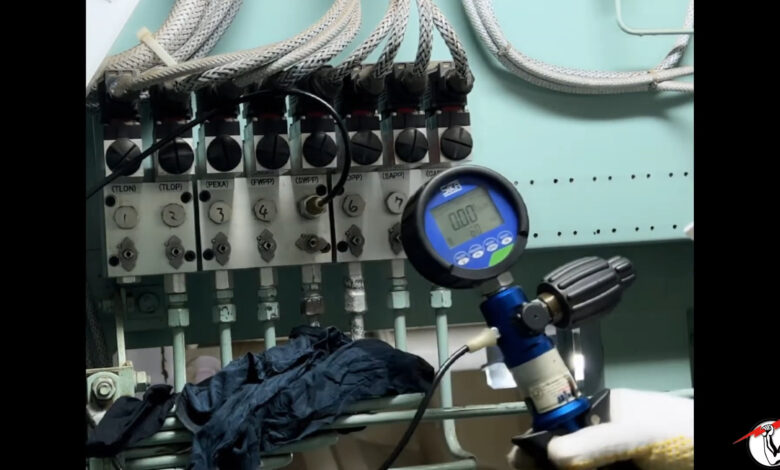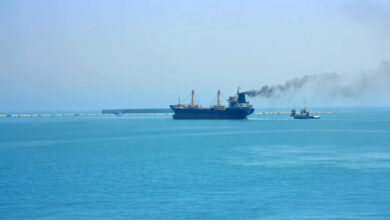Pressure Calibration for Ship Engineers: Step Up Your Skills and Avoid Disaster

How to Use a Pressure Calibrator: The Ultimate Guide to “Not Screwing It Up” on a Ship 🚢
Ah, pressure calibration—just what you dreamed of learning when you first stepped into the exciting world of marine engineering, right? Who doesn’t love fiddling with pressure switches, hydraulic oil, and alarms that sound like they’re auditioning for a horror movie? But here we are. I promise it’s way more fun when you know what you’re doing. So, let’s figure out how to use a pressure calibrator onboard without causing an alarm apocalypse. 🎉
Before You Start: Safety First (Because We’re Not Trying to Blow Up the Ship) ⚠️
- Keep your hands safe: Seriously, don’t be the hero trying to “hold” the pressure switch while it’s being calibrated. Unless you want a free hydraulic oil shower.
- Check your tools: If you’re using a broken calibrator, you might as well flip a coin to decide if that transmitter works or not.
- Eyes on the oil: You’re dealing with hydraulic oil here—no splashes, no mess, no chaos. Your shipmates will thank you.
Step-by-Step Guide to Pressure Calibration: A High-Stakes Game of “Does It Work?” 🎮
Step 1: Locate the “Victim”
Find your pressure transmitter or switch that needs calibration. Onboard ships, you’ll find these devices chilling in CO2 rooms, attached to fire suppression systems, or wherever critical alarms are necessary. If you’re not sure, just follow the terrifyingly loud alarms.
Step 2: Hook It Up
- Grab your pressure calibrator and connect it to the pressure transmitter.
- Hydraulic Oil Time! Fill up your calibrator’s oil chamber and get ready to pump. No, this isn’t arm day at the gym—this is science. 🏋️♂️
Step 3: Start Pumping (Slowly!)
Now comes the fun part. Begin pumping the calibrator slowly to build pressure in the system. You’re aiming for a specific pressure—let’s say 4 bar.
- Keep your eyes glued to the display. If your transmitter is working fine, it’ll show 4 bar. If it doesn’t… well, you’ve got a problem.
Example Scenarios to Look For:
- Perfect Scenario: You pump to 4 bar, and the transmitter reads 4 bar. Congratulations, your device isn’t a liar! 🎯
- Uh-Oh Scenario: You pump to 4 bar, but the display shows 1.2 bar. Houston, we have a calibration problem.
Step 4: Trigger the Alarm (On Purpose, I Swear)
For CO2 leakage switches, the pressure will trigger an alarm at around 4 bar. Here’s what to do:
- Slowly increase the pressure and watch the switch in action.
- The moment the alarm starts blaring like your 6 AM phone alarm, you know the pressure switch works.
- Reduce the pressure back down and make sure everything resets properly.
Step 5: Repeat Until It’s Perfect
Pressure calibration is all about precision. If the results are inconsistent or the alarm doesn’t trigger properly, you’ll need to adjust, reset, or outright replace the switch.
- Keep testing until everything works perfectly—because onboard, “almost right” is just another way of saying “disaster waiting to happen.”
Common Mistakes That Make You Look Like a Rookie 🚫
- Skipping the Oil Check: No oil = no pressure. You’ll look like you’re pumping for no reason.
- Over-Pumping: You’re testing a switch, not trying to blow it up. Take it slow.
- Ignoring Alarms: Don’t pretend you didn’t hear that CO2 alarm. That’s kind of the whole point of this exercise.
Why Bother With All This? 🤔
Pressure calibration isn’t just some technical hoop to jump through. It ensures that your alarms and transmitters work when you need them the most. On a ship, that’s not optional—it’s survival. Whether it’s a CO2 leak, engine room pressure, or temperature monitoring, proper calibration means you can trust your systems (and avoid surprise inspections from an angry chief engineer).
Final Thoughts: You’re Now a Pressure Calibrating Legend 🏆
So, there you have it! Pressure calibration: equal parts science, patience, and maybe a little bit of swearing at stubborn switches. If you followed these steps without accidentally triggering all the alarms onboard, congrats! You’re one step closer to earning respect on the ship (and avoiding yet another call from the chief).
Now go grab a coffee, wipe the oil off your hands, and pat yourself on the back—you deserve it. ☕
And hey, if you found this guide helpful, smash that subscribe button (or whatever you engineers do for fun) and check out more techy guides.






